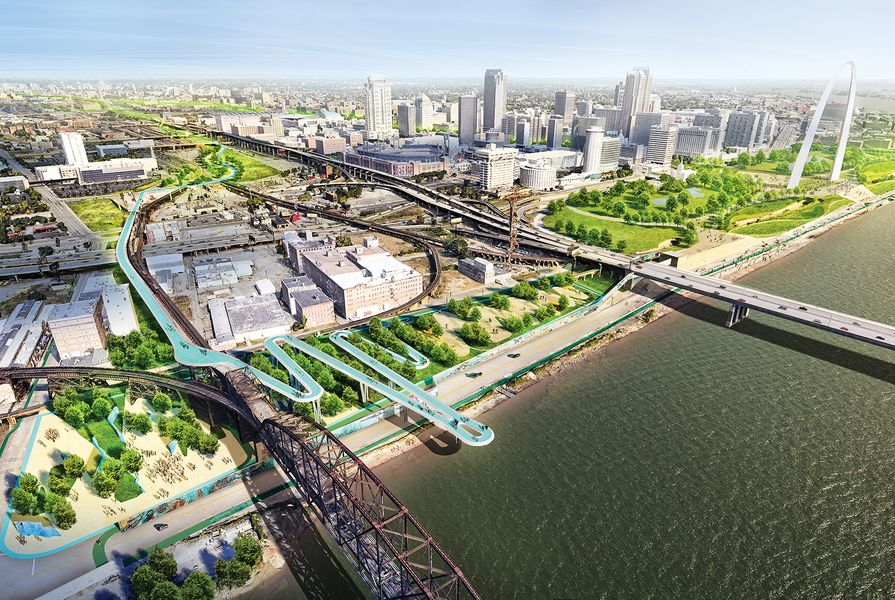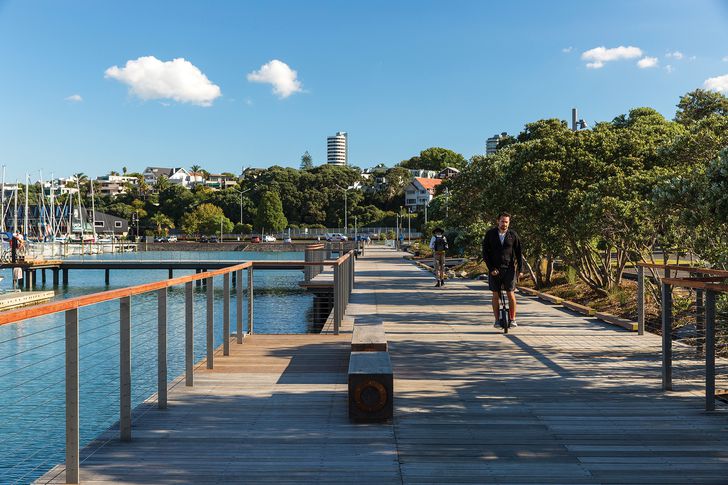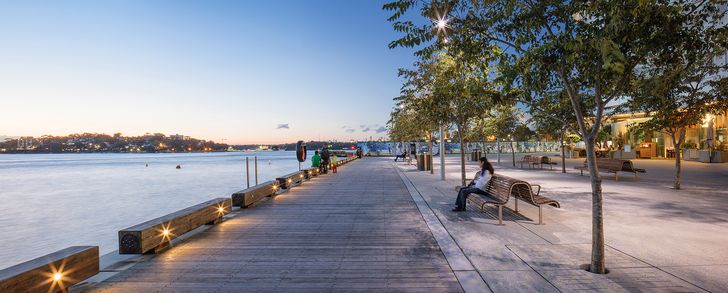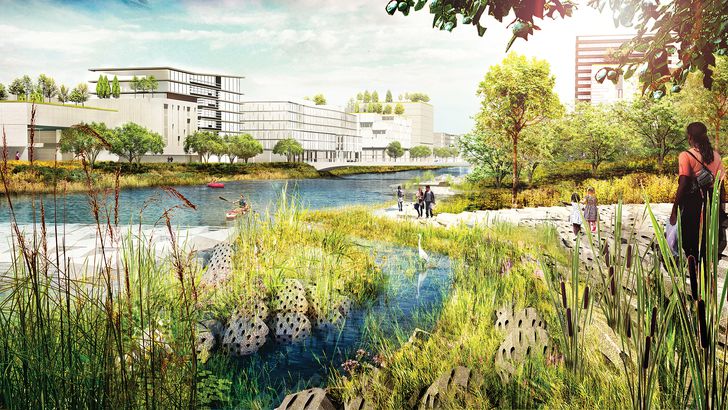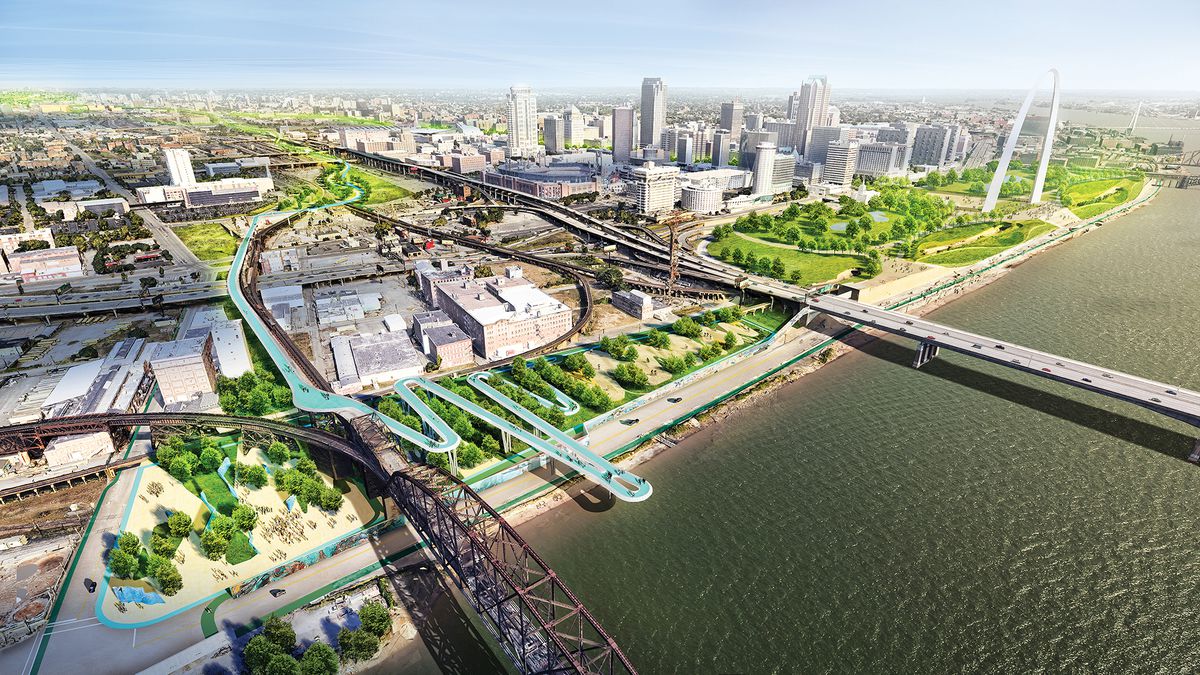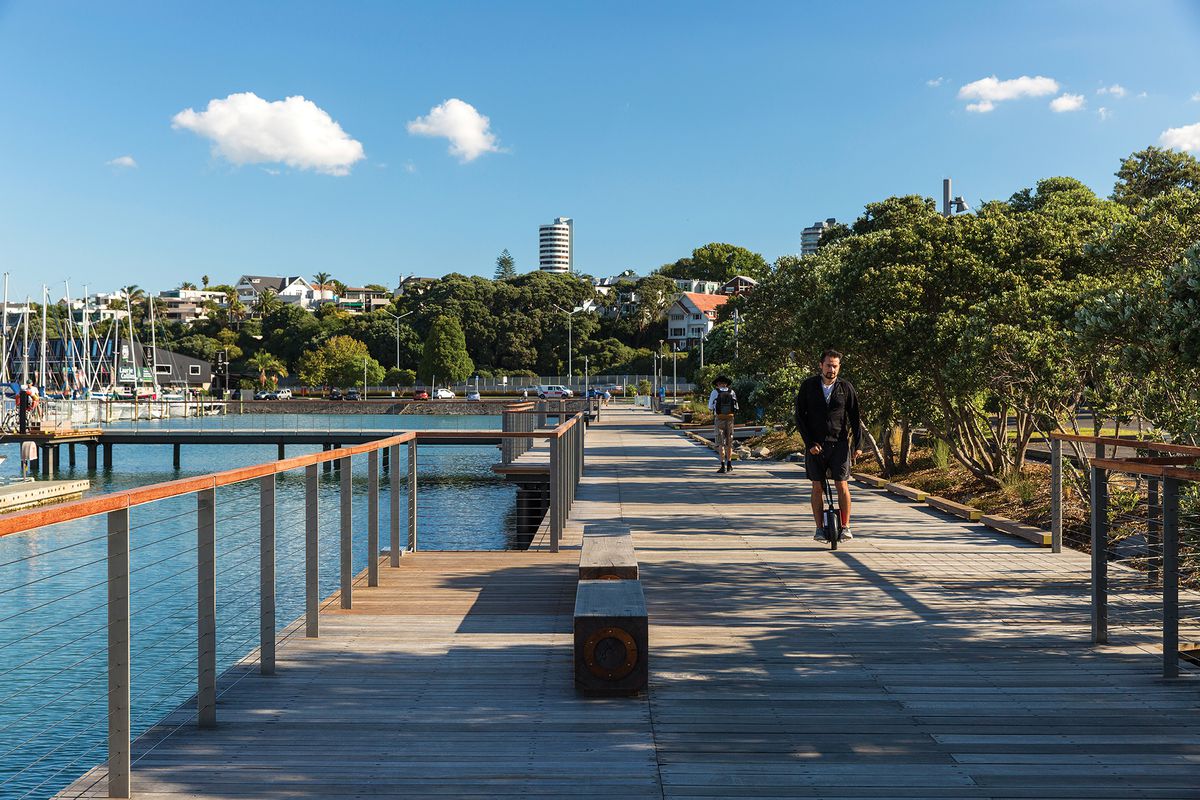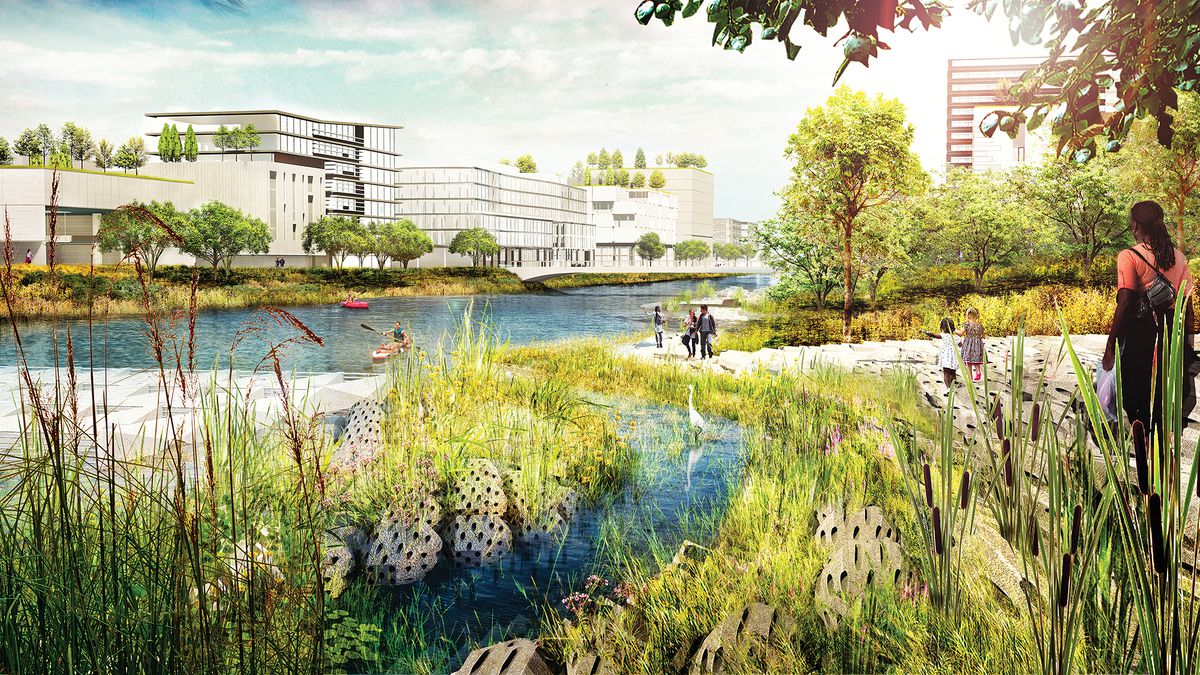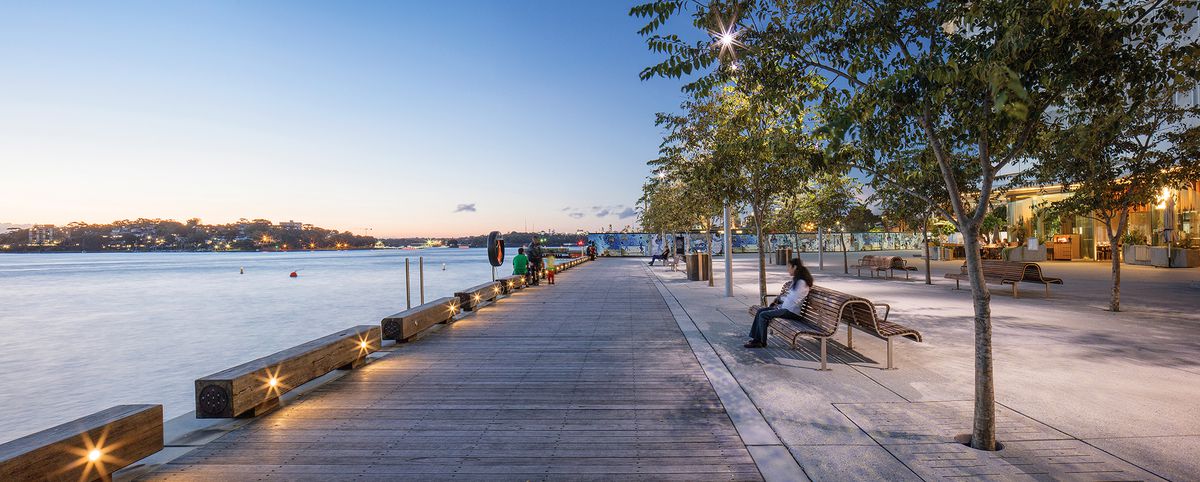Rosalea Monacella spoke with Chris Reed from Stoss Landscape Urbanism (Boston), Lisa Switkin and Richard Kennedy from James Corner Field Operations (New York), Bryna Lipper, formerly of 100 Resilient Cities (New York) and Sacha Coles of Aspect Studios (Sydney). Read Part I of the interview here.
Rosalea Monacella: Who or which organization do you think is in the best position to catalyse change?
Sacha Coles (Aspect Studios, Sydney): Previously, responsibility lay with the government to make policies that encourage and enable the private sector to implement resilient designs in a cost-effective way. However, this has not happened fast enough. Although rare, there are recent examples of committed private sector organizations driving change, for their own reasons: for branding, market definition or whatever else. Landscape architects working for these “new Medicis”– the city-makers, developers and urban regenerators – have the opportunity to test and implement progressive projects. I still believe, however, in the strong role of government to incentivize and/or show leadership around achieving societal health. A resilient environment is central to this.
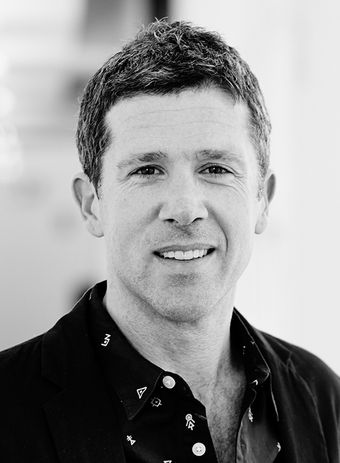
Sacha Coles, director – design and strategy, Aspect Studios (Sydney)
Bryna Lipper (formerly of 100 Resilient Cities, New York): Mayors and city managers have extraordinary opportunities to increase the resilience of their cities. They can formulate progressive policies and incentives about how land is used, and can leverage their investments to broker partnerships with the private sector, based on environmental impact. They can commission reviews of the impacts of new development on resilience. By implementing some simple moves across many cities, real outcomes can be achieved.
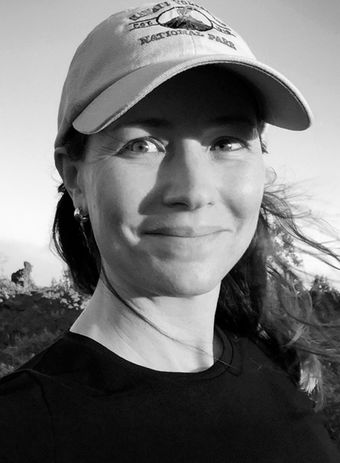
Bryna Lipper, former senior vice president and chief resilience advisor at 100 Resilient Cities (New York)
Chris Reed (Stoss Landscape Urbanism, Boston): The central question here is, “How do you design for change?” That is, change that [is predictable], but also unpredictable change. If you [begin] a project with that mindset, you’re going to come out with a different result: not a stage set [that] people [only] move in and around, but a shifting set of structures and armatures which themselves can be changed over time. At the plaza at Harvard University we created a structure that can be fitted out in many different ways. The surface is embedded with many different structural hook-ups, utility hook-ups and connections, so that any number of different events can be accommodated over time. What we have observed over the life of this project is that we invent new ways to configure and reconfigure the site every time they set up for a new kind of event. This is the idea, that we can put in place the means that allow and encourage landscapes to change and shift over time. A couple of years ago we started an experimental landscape in Cape Cod, Massachusetts, along a tidally influenced river that creates an undulating topography. Different plant communities were installed with the idea that if the environmental conditions shifted, there would always be reserves of plant communities that could become dominant depending on what shifts occurred. In that landscape, [we made sure that] there was always a very high and sheltered area and a very low and wet area, so that there would always be reserves of plant materials available to seed the site as it evolved over time.
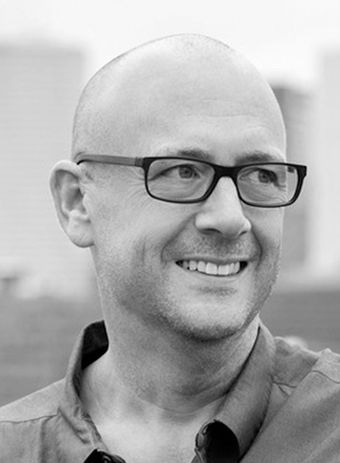
Chris Reed, founding director of Stoss Landscape Urbanism (Boston)
Lisa Switkin and Richard Kennedy (James Corner Field Operations, New York): It is not a single organization that will take the lead on resiliency issues. The key to change is inventing new multi-jurisdictional, collaborative, equitable and cooperative models, that will require organizations at all levels to adapt their standards and practices. To make a difference and to truly innovate, we need to invent new processes of design, communication, governance, funding and implementation. [It’s been said that] all authentic change is revolutionary, not evolutionary. Before being widely adopted, change usually has a breakthrough moment, which unfortunately typically comes to light after a crisis. Many would argue that we are in crisis right now, but for individuals who aren’t touched by it every day, it seems distant. [Landscape architects] are skilled at having visions, building consensus and bringing a holistic view, all of which are essential for true transformation. We need to share our skills and help shape the message to spur the revolution. There are great opportunities, of course, for new cities in Asia and Africa being built from the ground up to have a resilient agenda and mandate, and there are equally compelling examples of proactive cities reimagining their futures through transformational infill projects. Sidewalk Labs’ vision for a new district in Toronto combines “cutting-edge technology with people-centred urban design.” The challenge is inherent in their vision, and we, as landscape architects, can help to ensure that data and efficiency-driven systems don’t produce mundane, repetitive and banal environments.


Lisa Switkin and Richard Kennedy, senior principals at James Corner Field Operations (New York)
RM: How do your projects enable us to consider the DNA of the city differently? How can we retrofit our current cities?
CR: In many [of our projects] we are looking to adapt cities and urban fabrics that are already in place. The former industrial waterfronts that are lying fallow in many of our cities right now are definitely on the frontline of the impacts of climate change. There are opportunities there – and some of our work in East Boston deals with these districts. They encompass not only built-up areas, but also places that are yet to be built up, and so there are opportunities to begin to imagine what those places might be like. We’re only just beginning to do this, and the hard work of translating what you might call conceptual ideas or vision plans into reality is still in its infancy.
LS and RK: Our focus is on cities and urban regions. We believe a creative merging of nature and cities is the solution for continued growth and increased environmental sustainability and resilience. We imagine a future where nature and technology work together to improve the resiliency of our cities and towns, our social fabric and our collective health and wellbeing. The natural and built worlds are becoming more and more interwoven, resulting in a new urban nature. [In terms of design approach], there’s an opportunity here to evolve a new DNA or form that goes beyond mimicking nature. This could be thought of as moving away from designing an object or form (Kant’s Beauty) to designing formless complex and dynamic systems (Kant’s Sublime). Of course there is form in complex and dynamic systems, it just may not be obvious. We are moving toward designing landscapes of time, regeneration, production and process where the dynamic staging and process of making, remaking and reclaiming is part of the design. In this way, the form of the city could be structured and defined by its assets and resources – whether natural, historical or otherwise.
Designed by Aspect Studios in collaboration with Architectus and Landlab, Auckland’s Westhaven Promenade provides a pedestrian and cycle link between the city and the previously isolated Westhaven marina.
Image: Jonny Davis
RM: If the DNA of the city is changing, does this require a change in citizen, a change in its occupants and a change in the way we consider the relationship between human and non-human actors?
SC: Potentially, yes. This, however, relies on people deciding what kind of city they want – hot and rising, locked by traffic, with a dense centre and fringe sprawl, or an alternative to that which will require an investment in green infrastructure. In order for the latter to thrive, it will need a commitment by citizens to change their attitudes and habits. While this can be an incredibly hard thing to do, it will ultimately offer the opportunity for people to re-engage with their environment.
CR: It [requires] a change from the standpoint of conceptualization, [changes to] regulation and code, and certainly changes in the relationships of humans to their non-human environment. [The aim is to] promote strategies for creating new kinds of adaptive ecosystems and environments in the heart of cities. These environments will then incubate different creatures, new forms of wildlife that can cohabit with humans and each other, and provide opportunities for us to rediscover nature in the heart of cities. In Toronto, we have proposed a learning laboratory that uses experiments and temporary installations to explore new forms of social life in the city and to build physical landscapes around some of the tendencies that have emerged. [The landscapes] allow for future retrofitting based on both predicted and unexpected change.
LS and RK: Yes! Increasingly we are trying to contribute to greater “social resilience” within places, neighbourhoods and communities. This notion of social resilience can take many forms, from an increase in communities’ capacity to respond to and cope with environmental threats, to an increase in understanding the relationship between built form and the natural environment, to an increase in participation and responsible action, to an increase in access to assets and resources. Design processes, at their best, should foster participation and responsible action and produce more engaged citizens. Communication, engagement and advocacy are key to changing attitudes about the environment, but so too is exposure to nature and the joys and pleasures of being in immersive environments. This type of thinking supports the emerging concept of the “urban wild” as a visual and formal language rooted in nature, biodiversity and ecology. As wilderness landscapes are vanishing and being depleted, there seems to be a growing longing for the wild – for raw and perhaps less curated environments and experiences. “Wildness” is further reinforced by a current lifestyle that craves flexible, casual and loose ways of working and being, which is impacting the types of environments that people are drawn to and is likely to impact the qualities and character of future cities.
Sydney’s Barangaroo South by Aspect Oculus encourages new relationships between the city and its harbour by transforming disused infrastructure into green public space.
Image: Simon Wood
RM: Innovation seems to be key when designing for resilience and adaptation. What are some of the crucial innovations that have occurred, or need to occur, in the way design is approached?
SC: Innovation and maintenance are two sides of the same coin! There is such a vast range of ever-improving technologies in building systems and green infrastructure, all of which require ongoing investment and maintenance – which is often neglected. The emergence of connectivity through the Internet of Things provides the opportunity for sensors and monitoring system to alert us when a system is not working and requires maintenance. Of course, plants have their own inbuilt monitoring and alarms and people have the ability to water them. If the landscape design provided the opportunity for the community to get involved and manage a space, it would require less maintenance and provide multiple benefits. Rather than developing the next big thing, the previous big things need to be managed better throughout their life cycle.
The South Bay Sponge proposal by The Field Operations Team (led by James Corner Field Operations) for the Resilient By Design initiative swaps denser inland development in San Francisco’s Bay Area for a new resilient shoreline with wetlands that function as flood protection.
Image: James Corner Field Operations
CR: If your starting point is that landscapes change and adapt themselves, then we need the tools that allow for change and adaptation to happen through the design process itself. How can data be gathered, not just through digital monitoring but also through using anthropologists and others engaged in social and cultural studies, so that learning can be developed to inform the ways that landscapes can adapt and shift over time? We are finding when developing new urban projects that [innovation] comes from [embracing] a multitude of voices from diverse social, racial, ethnic and socioeconomic backgrounds. Different starting points [must be] embraced and engaged [in order to create] truly open, inclusive, welcoming, flexible and adaptive urban spaces of the future. [Today’s] landscape architects are helping solve some pretty serious social, racial and cultural issues – particularly important given where we are politically in the United States today. This is a much bigger role certainly than many of us in the profession may have originally signed up for, but it represents the true potential of what this profession and discipline is capable of.
LS and RK: Innovation is necessary on many levels and at many scales. Innovations in detailing and technology can help to reduce costs, improve efficiency, increase performance and enrich human experience. In our waterfront work we are incorporating new technologies to address resiliency, from filtration wetlands at Muscota Marsh in Upper Manhattan, to light-penetrating surfaces for salmon migration in Seattle, wave attenuating seawalls in Hong Kong, geothermal systems at Shelby Farms Park in Memphis, and large-scale land reclamation, soil compositing and seed farming at Freshkills Park in Staten Island. Innovations in approaches to design and planning can improve the environmental and economic performance of places. Our recent sea-level rise planning work with the Resilient By Design initiative for San Francisco’s Bay Area utilized a rezoning concept to guide future growth by encouraging dense and mixed forms of development in suitable sites while releasing flood-prone areas as a way to support the region’s flood management strategy. Innovations in communication and engagement can improve community and social resilience. While less documented, social resilience significantly impacts how a community can self-organize, recover, respond to change and learn. This starts with ensuring communities are engaged and empowered and have a collective vision for the future. We aim to convey the specific relevance of our work to each community and each place; to listen, absorb and interact with the community; and to be optimistic, forward-thinking, memorable and fun – all with the aim of fostering greater curiosity, enthusiasm and optimism for planning and design initiatives. Finally, innovations in governance will be necessary to achieve and implement any large-scale climate adaptation and resiliency projects. In our work with Resilient By Design, we defined a new governance framework across jurisdictions in California’s Silicon Valley. The framework may take the form of a special district that enables a host of funding mechanisms to become feasible. Six regional governments, plus a county water district and NASA would enter a collaborative agreement to define how the region messages, deliberates, prioritizes, acquires funds and implements multi-benefit resiliency projects. While this scale of cooperative agreement is unprecedented, it is necessary to protect the region and increase resilience worldwide.
Source
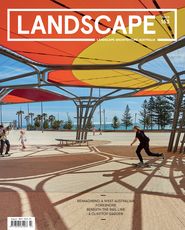
Practice
Published online: 4 Dec 2019
Words:
Rosalea Monacella
Images:
James Corner Field Operations,
Jonny Davis,
Simon Wood,
Stoss Landscape Urbanism
Issue
Landscape Architecture Australia, August 2019

